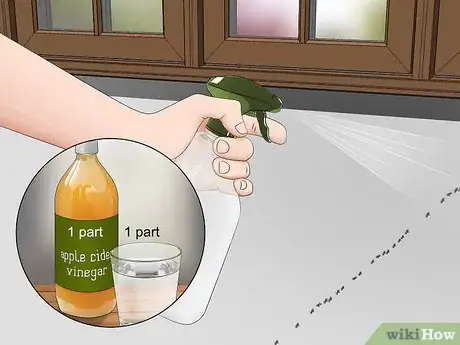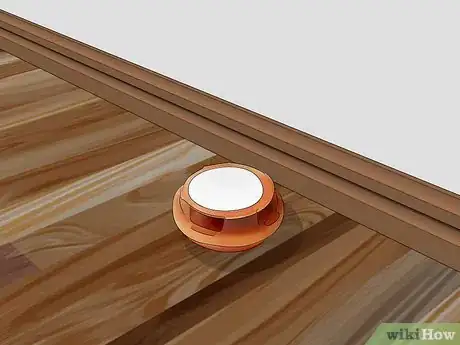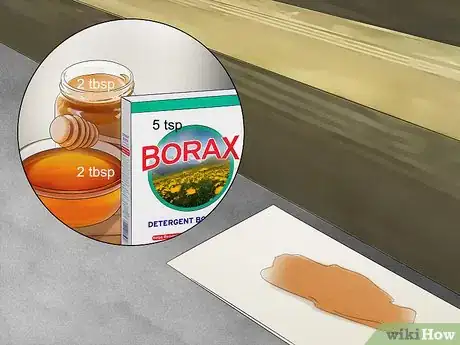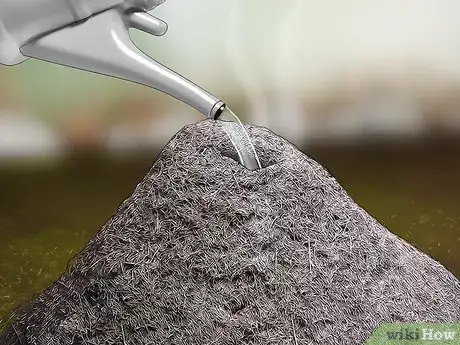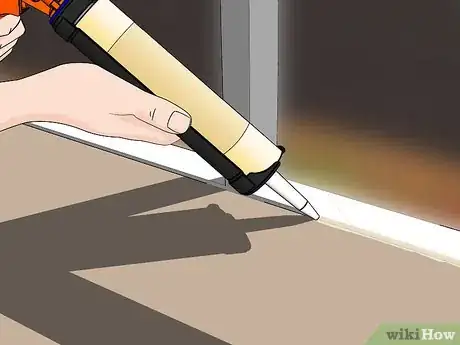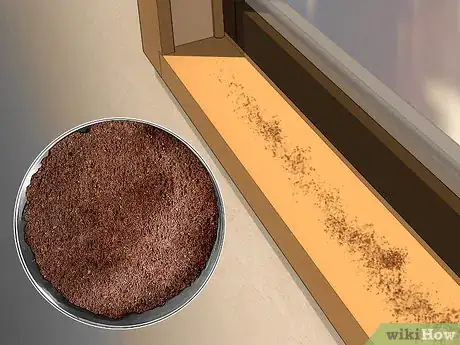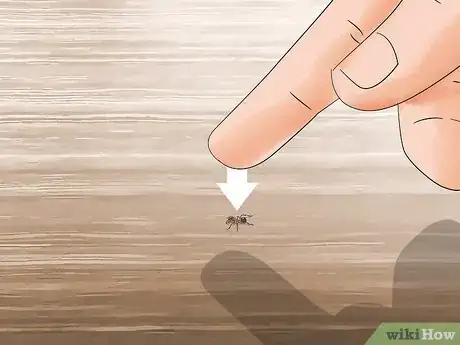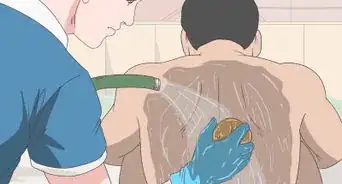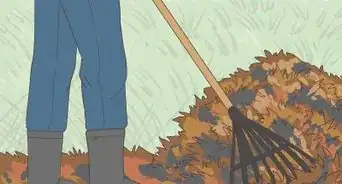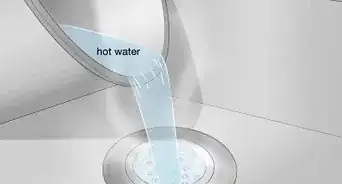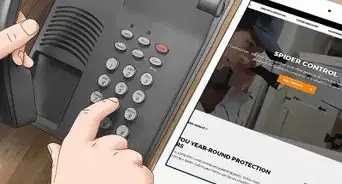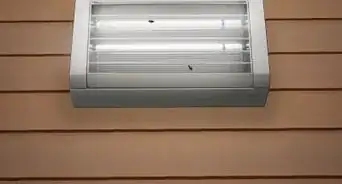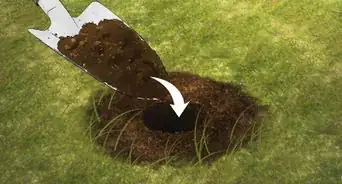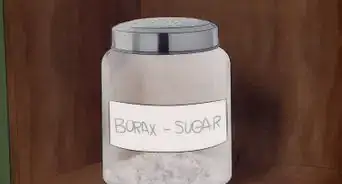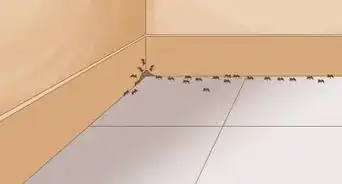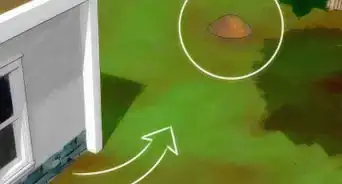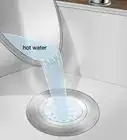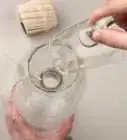This article was co-authored by Hussam Bin Break and by wikiHow staff writer, Danielle Blinka, MA, MPA. Hussam Bin Break is a Certified Commercial Pesticide Applicator and Operations Manager. He and his brother Hussam co-founded Diagno Pest Control in the greater Philadelphia area in 2018, and have since expanded their services to include the New Jersey market. Diagno Pest Control has received Home Advisor's Top Rated and Elite Service Badges for quality of work and customer service.
There are 10 references cited in this article, which can be found at the bottom of the page.
wikiHow marks an article as reader-approved once it receives enough positive feedback. This article received 39 testimonials and 93% of readers who voted found it helpful, earning it our reader-approved status.
This article has been viewed 8,154,897 times.
Although ants can be beneficial to the ecosystem, they can also be pests. If you have ants plaguing your home or yard, you’ll be happy to know that it’s possible to get rid of them. You can remove ants from your home by killing them, but you’ll also need to remove their pheromone trail that attracts other ants. You can also remove ants from your yard using common treatments. Once the ants are gone, you’ll need to keep your home clean and secure to prevent a reinfestation.
Steps
Removing Ants from Your Home
-
1Kill the ant trail if you see one. When ants enter your home, they leave a pheromone trail for other ants to follow. Soon, you’ll see a trail of ants marching into your house. Eliminate the trailing ants and their trail with soapy water, all-purpose cleaner, or a bleach solution. This will kill the ants and remove their pheromone smell so that other ants don’t follow.
- Killing the trail means getting rid of the ants and wiping away the pheromone trail they leave behind.
-
2Soak a sponge in soapy water or cleaner, then wipe away the ants. Rinse the sponge, ants included, out in the sink between passes. Keep wiping until you’ve collected all of the ants, then do 1 final pass to make sure the trail is gone.
- If you prefer to use a spray cleaner, you can spritz all-purpose cleaner or a bleach solution onto the ants, then wipe them up with paper towels. Repeat until all of the ants are removed, then clean the trail 1 more time to remove the pheromones.
Advertisement -
3Make your own apple cider vinegar solution to kill the trail naturally. Mix 1 part apple vinegar solution and 1 part water into a spray bottle. Spray the solution onto the ants and their trail, then wipe it away. Continue spraying and wiping until you’ve removed all of the ants, then clean the train 1 more time.[1]
- Vinegar has a strong smell, but it should dissipate quickly.
-
4Vacuum up the ants if there are too many to wipe up. Sprinkle borax or diatomaceous earth over the ants, then vacuum them up. Once the ants are removed, you should immediately dump out the vacuum cleaner. Place the contents in an outdoor trash can. While the ants should be dead, you don’t want to risk them creating a home inside the vacuum.[2]
- Borax and diatomaceous earth both kill ants. Borax is a detergent, which you can find in the laundry aisle.[3] Diatomaceous earth is made up of crushed fossilized skeletons. Although it's harmful to ants, it's nontoxic for humans and pets.[4]
- Alternatively, you can place a little borax or diatomaceous earth inside your vacuum cleaner chamber, then vacuum up the ants.
- Clean the area where the ants were crawling to remove any possible trails. You can use soapy water, an all-purpose cleaner, or an equal parts vinegar-water mixture.
-
5Use a commercial bait trap to easily kill the entire colony. Baits are often the best way to treat ants because they will take the bait back to their mound to share with the rest of the colony. After the ants ingest the bait, it will kill them. All you need to do is wait. Place your baits in areas the ants frequent, such as under your water pipes, in your pantry, or at the corner of your counter.[5]
- Replace the baits after they dry out, which can occur in 1-3 months depending on the brand. Read the label to find out how long the baits typically last.
- Don’t spray repellants near your baits, as this will discourage the ants from taking the bait.
- Follow all instructions to use the product safely.
- You can find baits at local department stores or online.
- Use caution when placing baits in homes with children and pets. Although many baits are childproof, they can still harm curious children and pets if the bait is ingested. You should also wash your hands after handling the bait.
-
6Make your own bait trap if you prefer a natural solution. Mix 1 tablespoon (9 grams) of boric acid into 1.25 cups (251 grams) of sugar. Sprinkle the mixture around areas the ants frequent, such as around water pipes, in the back of the pantry, or just inside the door.[6]
- Keep children and pets away from the mixture, as it’s toxic.
- If you have children and pets, a safe way to use the bait is to seal it up in a jar. Punch 2-3 tiny holes in the lid of the jar so that the ants can get inside. Then, seal the lid.[7]
- Avoid spraying repellants around the bait, as this will keep the ants from getting it.
- Remove the bait after you don’t see ants for a while, as leaving it out could attract new ants.
-
7Try peanut butter bait as another natural alternative. Mix 2 tablespoons (30 mL) of peanut butter, 2 tablespoons (30 mL) of honey, and 0.5 teaspoons (2.5 grams) of borax. Place a small amount on little pieces of cardboard, then put the cardboard where the ants are active. The worker ants will take the bait back to the colony, killing all of the ants.[8]
- Replace the baits when they dry out, which can occur within a few days. You should change it at least once a week until the ant problem is under control.
- After you stop seeing ants come to the bait, remove it completely so that you don’t attract a new colony.
-
8Hire an exterminator if the problem persists or it’s carpenter ants. In some cases, you may need professional expertise, especially if an infestation has gotten out of control. They can treat your entire home for ants, effectively getting rid of them.[9]
- Keep in mind that the ants you see are often just 10% of the colony, which is why it’s hard to kill them all.
- If you have carpenter ants, a professional exterminator is your best bet. These ants are large and either black or red. Since carpenter ants eat wood, they can destroy your home if not treated quickly.[10]
Eradicating Ants Outside
-
1Put out ant bait to kill the entire colony. Bait is the most effective ant killer because the ants will take it deep in the mound, exposing all of the ants to the treatment. Place fresh bait near the ant mounds at times when the ants are foraging. The optimal foraging times are when the temperature ranges between 70 and 95 °F (21 and 35 °C).[11] Worker ants will take the bait back to the colony, effectively treating the entire mound.
- Change out the bait often. It won’t work once it’s dried out, and water will ruin it.[12]
- For commercial bait, check the label to see how long it usually lasts before drying out. If you're using homemade bait, expect it to last a few days to a week.
-
2Pour boiling water over the ant mounds. Use a stick or shovel to puncture the ant hill. Then, pour 1 gallon (3.8 L) of boiling water over the mound. Repeat 2 times, for a total of 3 gallons (11 L) of boiling water. This is about 60% effective at killing off the colony, so you may need to repeat the process a few days later.
- If you use soapy boiling water, you can increase the effectiveness to 60-70%.
- Be careful to keep the water on the ant hill, as it can damage surrounding vegetation.
- This works best on smaller ant hills.
-
3Treat your yard with an insecticide to kill ants. An insecticide is effective against ants, but it may not penetrate the whole mound. Mow your lawn before you apply the treatment, being careful to avoid the ant mounds. This allows the insecticide to reach the soil. Then, spray or sprinkle the insecticide on your lawn.[13]
- Make sure the product is labeled for use outdoors.
- Chemical treatments can be harmful to you, children, pets, and the environment, so use them carefully.
- Follow all product instructions.
- As an alternative, you can add the insecticide directly to the ant mound.
-
4Treat the mound with camphor oil and ethyl alcohol. Mix 1 part camphor oil with 9 parts ethyl alcohol. Pierce the ant mound with a stick or shovel, then pour the solution over the ant mound. It’s very effective at killing the ants, but you may need to treat the mound more than once for it to be fully effective.[14]
- This may not kill the queen, which means the mound could recover. You can do multiple treatments or switch tactics for a stubborn mound.
Keeping Ants Away
-
1Block their entry point. If ants are in your home, they’re getting in somewhere. Since they’re so small, even a tiny crack can let them in. Inspect your home for cracks and crevices, making repairs where necessary.[15]
-
2Store food in airtight containers. This keeps the ants out of your food and deters ants from entering your kitchen. Without a food source, there’s no reason for them to come![16]
- You can get airtight containers at your local department store, homegoods store, or online.
-
3Clean your kitchen after each meal. Ants usually only enter your home if there’s a food source there. Unfortunately, even a small amount of food can draw ants. You need to keep all traces of food cleaned up to keep the ants away.[17]
- Don’t allow dirty dishes to sit in the sink. Wash them daily or after every meal, for best results.
- Spray down and wipe counters using soapy water, an all-purpose cleaner, or a solution of 1 part apple cider vinegar and 1 part water.
- Sweep and mop the kitchen daily to remove crumbs that could attract ants.
- If your family eats in other areas of your home, you should sweep or vacuum those areas daily.
-
4Create a “moat” around pet food bowls. Place your food bowls in a slightly larger container. Then, add water to the larger bowl so that the food bowl is surrounded by water. This creates a “moat” that is hard for ants to cross. Refill the larger bowl regularly to maintain the moat.[18]
- You don’t need to refill the bowl until the water appears low.
-
5Put coffee grounds, cinnamon, or baby powder near doors or windows. The scents of these substances repel ants. Additionally, coffee grounds are acidic and can burn the ants if they attempt to cross it.
- You can also use cinnamon or peppermint essential oil. Simply mix a few drops of the oil into a spray bottle full of water, then spray it around doors and windows.[19]
-
6Squish the scouts to keep other ants out. Colonies regularly send out lone ants to check for food sources. If you see an individual ant strolling across your coffee table, don't let it make it back to the nest alive! It will provide a trail for the rest of the colony, who will soon make the journey into your home. Killing this single ant can save you a lot of headaches down the road by preventing an infestation.[20]
Expert Q&A
-
QuestionWhy do ants keep coming back?
 Hussam Bin BreakHussam Bin Break is a Certified Commercial Pesticide Applicator and Operations Manager. He and his brother Hussam co-founded Diagno Pest Control in the greater Philadelphia area in 2018, and have since expanded their services to include the New Jersey market. Diagno Pest Control has received Home Advisor's Top Rated and Elite Service Badges for quality of work and customer service.
Hussam Bin BreakHussam Bin Break is a Certified Commercial Pesticide Applicator and Operations Manager. He and his brother Hussam co-founded Diagno Pest Control in the greater Philadelphia area in 2018, and have since expanded their services to include the New Jersey market. Diagno Pest Control has received Home Advisor's Top Rated and Elite Service Badges for quality of work and customer service.
Pest Control Professional Destroying the colony is the only way to get rid of ants permanently. You can use repellents to deter ants, but if you want to deal with them in a permanent way, you have to knock down the whole colony. For that, I'd recommend using bait, especially granular bait if you have access to it.
Destroying the colony is the only way to get rid of ants permanently. You can use repellents to deter ants, but if you want to deal with them in a permanent way, you have to knock down the whole colony. For that, I'd recommend using bait, especially granular bait if you have access to it.
Warnings
- Planting mint around your house and garden may deter ants. However, mint can be invasive, so it’s best to keep it in planters if you decide to try it.⧼thumbs_response⧽
- Keep all ant-deterring substances and poisons out of the reach of children and pets. Many of the materials are highly toxic. They should be kept neatly in a distant cupboard or any heightened place.⧼thumbs_response⧽
- It’s best to wear protective gear, such as gloves, eyewear, and a breathing mask, when handling ant deterrents.⧼thumbs_response⧽
- Be careful when handling chemicals, cleansers, or borax. All of these can be hazardous to humans and animals.⧼thumbs_response⧽
References
- ↑ https://housemethod.com/pest/how-to-get-rid-of-ants/
- ↑ http://www.pestremovalguide.com/get-rid-of-ants/
- ↑ http://www.homemadehints.com/homemade-ant-killer/
- ↑ http://www.vegetablegardener.com/item/8107/diatomaceous-earth-as-non-toxic-ant-killer
- ↑ https://www.goodhousekeeping.com/home/a46670/how-to-get-rid-of-ants/
- ↑ https://www.goodhousekeeping.com/home/a46670/how-to-get-rid-of-ants/
- ↑ https://www.nrdc.org/stories/control-household-pests-without-scary-poisons
- ↑ http://www.pestcontrolmanagement.org/how-to-make-your-own-ant-baits.html
- ↑ https://www.goodhousekeeping.com/home/a46670/how-to-get-rid-of-ants/
- ↑ https://housemethod.com/pest/how-to-get-rid-of-ants/
- ↑ https://citybugs.tamu.edu/2014/05/06/time-to-bait-for-fire-ants/
- ↑ https://ant-pests.extension.org/fire-ant-control-the-two-step-method-and-other-approaches/
- ↑ https://ant-pests.extension.org/fire-ant-control-the-two-step-method-and-other-approaches/
- ↑ http://www.pestremovalguide.com/get-rid-of-ants/
- ↑ https://www.goodhousekeeping.com/home/a46670/how-to-get-rid-of-ants/
- ↑ https://www.goodhousekeeping.com/home/a46670/how-to-get-rid-of-ants/
- ↑ https://housemethod.com/pest/how-to-get-rid-of-ants/
- ↑ https://www.bhg.com.au/keep-ants-out-of-dogs-food-bowl
- ↑ https://housemethod.com/pest/how-to-get-rid-of-ants/
- ↑ https://housemethod.com/pest/how-to-get-rid-of-ants/
About This Article
To get rid of ants, soak a sponge in a mixture of dish soap, or vinegar, and water and use the sponge to wipe up the ants and their trail. It is important to fully wipe up the trail so other ants in the colony don't follow it later. If there are too many ants to wipe up, you can use a vacuum to suck them up instead. Make sure you empty the vacuum bag afterward into a sealed space or else the ants can escape and return back into your home. After you are done vacuuming, it is still important to go back and wipe up the ant trail with soapy water or a vinegar solution. If the ants come back, you can try putting commercial bait traps around your home in spaces where you see ants as this bait will kill an entire colony, if it makes its way to the queen. The traps will likely attract many ants so be careful where you put them. You may also need to replace the trap once the ants eat all of the poison. Be patient as it sometimes takes several weeks before a set of traps will successfully remove a colony. For tips on making natural cleaners and deterrents, read on!


